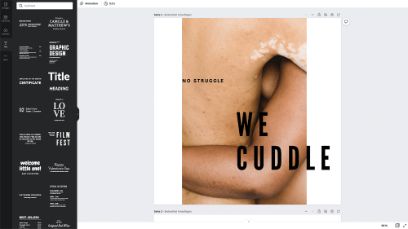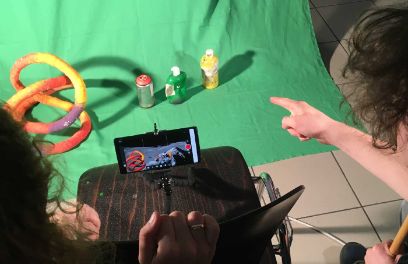- Story
Nine tools and ideas for digital learning
18.10.2023 In conjunction with four other European universities, the Art Education degree programme at Bern Academy of the Arts HKB-BFH has collected tools and ideas for digital art-making, art education and design education. Here, we briefly present seven tools and two teaching ideas that can be used in art lessons – and elsewhere too.
The website didae.eu was created to publish the results of the Erasmus+ project DIDAE, a joint research project by five European universities. A team from HKB-BFH led by Maren Polte was very involved in the project.
The collection on didae.eu currently includes 117 tools and 40 ideas for teaching digital art. The project came into being between 2021 and 2022, originally in response to the remote learning requirements in the classroom made necessary by COVID-19.
Although DIDAE was designed explicitly as a toolbox for teaching digital art teaching, some of the techniques and tools described also have potential for application in e-learning in general.
To ensure that the toolkit can be used as universally as possible, the team selected tools and a didactic concept based on criteria such as free access, a simple user interface, low-threshold usability, data protection, online stability, different end devices, peer-to-peer learning, social inclusiveness and creative potential.
1 Learn with GIFs
This lesson idea gets to grips with animated GIFs (image format) and typography. Activities based on examples of semantic typography are followed by the opportunity to develop animated GIFs. The aim is to foster a responsible, critical attitude to communication with GIFs on digital channels. The assignment is suitable for students who already have some experience of digital image editing and a basic knowledge of typography and layout.
2 Buy my stuff
In this lesson, students discuss the influence and impact of advertising and influencers. Following analysis and discussion, students translate their observations into their own ads. These may be for fictitious products or campaigns, and can present a serious or satirical take on a certain product or advertising in general.
3 Have fun practising typography
Kern Type is a free online game for anyone interested in typography. The aim of the game is to find the perfect horizontal distance between several letters. With progressing levels of difficulty, well-known fonts from history are presented, along with the designers who created them. At the end of the game, a score is awarded.
4 Experiment with sound patterns
Omni is a free digital synthesiser. The web app lets you produce synthetic harp sounds and modify them with effects such as delay or reverb. Forty different scales from different cultures are available. Live generated sounds can be recorded, looped and later exported or downloaded.
5 Try out stop motion
Fancy creating your own stop-motion animations à la Wallace & Gromit? Stop Motion Studio provides all the tools you need to get started right from your smartphone or tablet. Using the mobile app, individual photos can be taken and edited directly in the smartphone camera. The individual frames can be aligned precisely using fade-in grids and onion skinning (the simultaneous display of several individual images). The stop-motion productions can be played, edited and exported directly in the app.
6 Build programs
With Scratch, children and young people can quickly and easily learn to program stories, interactive games and animations. The results can be shared with the online community to gain insight into the other users’ work and code. Scratch is a free graphical programming language with an online platform of the same name and open-source apps. It is primarily aimed at the age group between 8 and 16.
7 Create interactive games
Twine allows non-programmers to tell non-linear, interactive stories. Individual text passages or words can be linked together, and narrative strands can be interwoven, run parallel or lead to alternative endings. For simple stories, no programming skills are necessary. Those who prefer it more complex can also work with variables, images, sounds and videos. Twine stories can be opened and played in any browser.
8 Make simple logos
Dotgrid makes it easy to design your first vector graphics such as logos, pictograms or even fonts. The software comes with a small selection of tools and supports layers. Dotgrid is a very small and clearly organised app that even design newcomers can get the hang of very quickly.
9 Create curves
The Bézier Game is a didactic online game that teaches students how to draw vector lines. It displays simple line drawings that users have to trace using the path tool only – a typical tool found in many drawing programs. The principle is simple, but it leads to rapid learning success via gamification.


